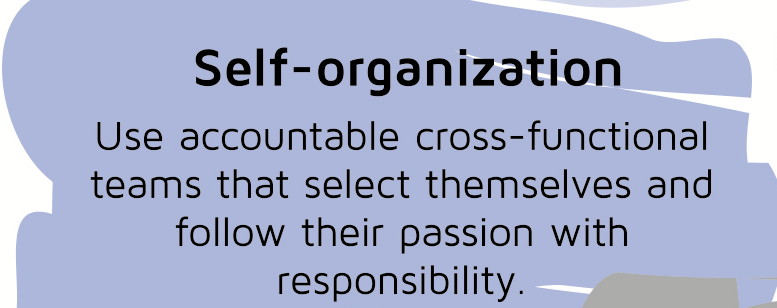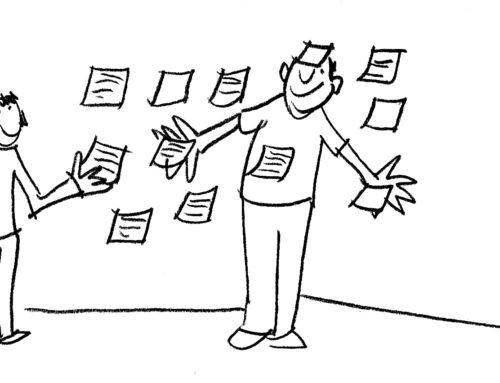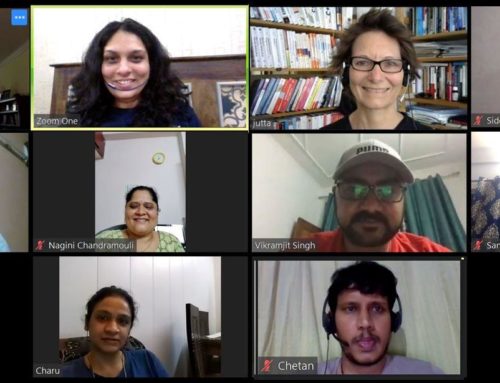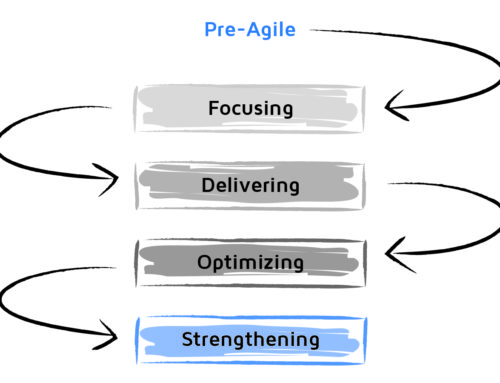Self-Organize With Company-Wide Agility
This article is the first in a planned series. It synthesizes what four streams of development have to say about self organization: Beyond Budgeting, Open Space, Sociocracy, and Agile (BOSSA nova).
All four streams support the idea that a common goal, shared values, and ideals around equivalence in power, mutual respect, and fairness enables all levels of a company to self organize. Therefore, it is important to take time to build clarity about the common goal and agreements around values.
The different streams suggest a change in structure to support self organization, and the combination of the streams yields the following advice:
- Self organization is sparked by a common aim, equivalence, or/and shared values. These define the container, thus the aim and value have an impact on the width or narrowness of the container. The streams have different names for the “container,” from team to circle to spontaneously forming group, but all streams emphasize the importance of a shared aim and values.
- The container is stronger if the aim is based on the customer’s needs because the customer brings in an outside pressure or force that drives the self organization phenomena.
- Use cross-functionality for including all necessary and different perspectives. The variety in perspectives must be balanced with the common aim.
Although the four streams talk about trust in different ways, they deliver a core message:
- Trust in the wisdom of the individuals and their interactions, which means fewer rules and guidelines. They become semi-autonomous because they are not micromanaged. You can build trust by:
– Setting rules that assume all employees want company success.
– Relying on self-selecting teams / groups.
– Using retrospectives for adapting the process (and structure) for the actual needs.
Furthermore, self-organization creates trust. If the structures for encouraging self-organization are working well, then the level of trust should build over time. Features include:
- Decision-making procedures based on consent for creating equivalence – an equal voice for everyone involved.
- Double-linking for creating a bottom-up link (next to the usual top-down link), which builds a feedback loop in a hierarchy.
- Open meetings, where anyone who cares about the issue is invited to attend or even call the meeting, and the topic is the priority. Totally new things can emerge, and the schedule bends to that priority.
We prepared this article from our new book Company-Wide Agility with Beyond Budgeting, Open Space, and Sociocracy, Chapter 3, Self Organization.






